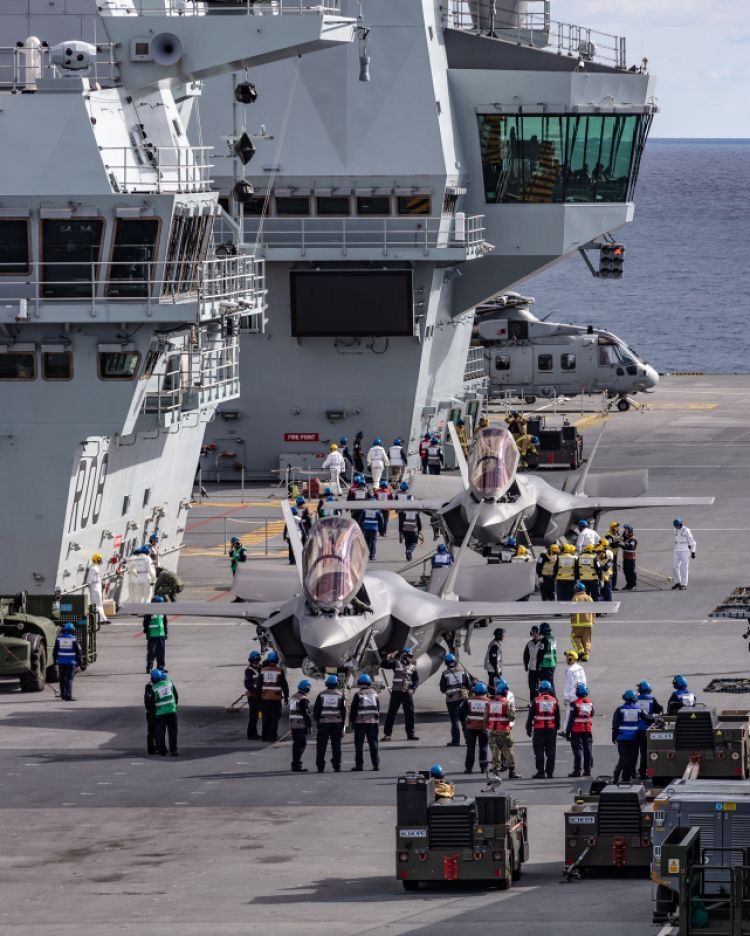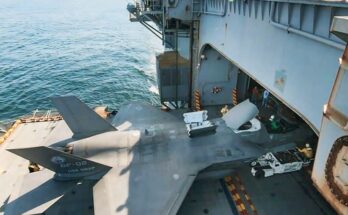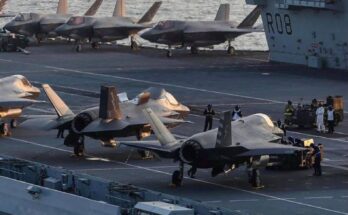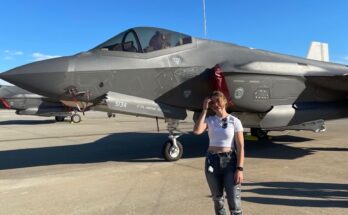
Stepping on board HMS Queen Elizabeth (R08) is to enter the largest and most powerful warship ever built for the Royal Navy. Commissioned in 2017, she is not only Britain’s flagship but also a floating city at sea, home to more than 1,600 personnel when operating at full capacity. Life on board blends advanced technology, military discipline, and the routines of everyday living, all within a vessel designed to project air power across the globe.
The first impression is her sheer size. At 65,000 tonnes and 280 meters long, HMS Queen Elizabeth dwarfs previous British carriers. The flight deck dominates the top of the ship, stretching across four acres and providing the space needed for short take-off and vertical landing jets like the F-35B Lightning II. Two island superstructures rise from the starboard side — one forward for ship navigation, the other aft for flight operations. This unusual arrangement not only makes the ship distinctive but also improves efficiency by separating the two command functions.
Below the flight deck lies the vast aircraft hangar, which can house up to 20 F-35Bs or a mix of helicopters for transport, surveillance, and anti-submarine warfare. Heavy-duty lifts connect the hangar to the flight deck, each capable of carrying two armed fighter jets at once. These lifts, along with the ship’s automated systems, allow for quick turnarounds, keeping the tempo of operations high during exercises or combat missions.
Living on board is a mix of routine and readiness. Accommodation is designed with comfort and practicality in mind. The crew live in shared messes, each with bunks, lockers, and communal areas. Though space is limited, the ship provides a range of facilities to support daily life. A large galley and bakery prepare thousands of meals each day, while recreational areas, gyms, and even a chapel contribute to morale during long deployments. For medical support, the ship is equipped with a fully functioning hospital, complete with an operating theatre, intensive care unit, and dental surgery.
Daily life follows a watch system, with sailors and officers rotating shifts to keep the ship running around the clock. On the operations deck, sailors monitor navigation, radar, and communications, while in the engine rooms, engineers manage the gas turbines and electric propulsion systems that power the ship. Above, flight deck crews work in color-coded teams, guiding jets and helicopters during take-offs and landings in an environment that demands precision and constant awareness.
What makes HMS Queen Elizabeth remarkable is not only her military strength but also her versatility. She can support humanitarian missions, disaster relief, and joint exercises with allied navies. During deployments, the ship often hosts international aircraft and personnel, reflecting her role as a hub for cooperation as well as combat readiness.
Being on board HMS Queen Elizabeth is to witness a blend of tradition and modernity. The ship represents centuries of Royal Navy heritage, yet she operates with the latest technology and global ambitions. More than just a warship, she is a mobile base, a symbol of national power, and a home to the men and women who serve on her.


